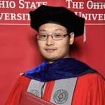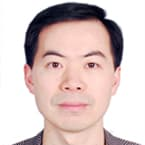Elastic Wave Scattering in Heterogeneous Media
A special issue of Acoustics (ISSN 2624-599X).
Deadline for manuscript submissions: closed (23 September 2022) | Viewed by 29583
Special Issue Editors
Interests: elastic waves; scattering; attenuation; heterogeneous media; ultrasonic measurements; ultrasonic transducers
Interests: ultrasonic nondestructive evaluation; ultrasonic characterization of random media; ultrasonic phased array testing; ultrasound Imaging; nonlinear ultrasonic techniques; ultrasonic measurement model; signals analysis processing
Special Issues, Collections and Topics in MDPI journals
Special Issue Information
Dear Colleagues,
Elastic wave scattering in heterogeneous media is a long-lasting research topic in the acoustic field and has practical applications in nondestructive evaluation, biomedical engineering, and geotechnical engineering. Elastic wave scattering takes place around a piece of heterogeneity because the elastic properties of the heterogeneous constituent differ from its surrounding medium, and the scattering can further result in wave beam attenuation and wave velocity dispersion. Thanks to advances in high-performance computing, mathematical modeling, electronics, and data visualization, theoretical developments and experimental measurements about elastic wave scattering have thrived in the recent decade.
This Special Issue aims at linear wave scattering and nonlinear wave scattering in heterogeneous media that include but are not limited to polycrystalline materials, the Earth’s mantle, composite materials, 3D-printed structures, porous media, Voronoi tessellations, and human tissues. This Special Issue seeks to explore cutting-edge research in elastic wave scattering by bringing new models or experimental results. The research approaches could be analytical modeling, numerical modeling (e.g., finite element modeling), experimental measurement or statistical modeling (e.g., machine learning). Additionally, case studies intended for practical applications to determine heterogeneity characteristics (e.g., particle size and morphology, discontinuity, nonlinearity) based on elastic wave scattering, namely solving the inverse problems, are strongly recommended in this Special Issue. Submissions in the form of review articles are also welcome.
Dr. Gaofeng Sha
Dr. Xiongbing Li
Guest Editors
Manuscript Submission Information
Manuscripts should be submitted online at www.mdpi.com by registering and logging in to this website. Once you are registered, click here to go to the submission form. Manuscripts can be submitted until the deadline. All submissions that pass pre-check are peer-reviewed. Accepted papers will be published continuously in the journal (as soon as accepted) and will be listed together on the special issue website. Research articles, review articles as well as short communications are invited. For planned papers, a title and short abstract (about 100 words) can be sent to the Editorial Office for announcement on this website.
Submitted manuscripts should not have been published previously, nor be under consideration for publication elsewhere (except conference proceedings papers). All manuscripts are thoroughly refereed through a single-blind peer-review process. A guide for authors and other relevant information for submission of manuscripts is available on the Instructions for Authors page. Acoustics is an international peer-reviewed open access quarterly journal published by MDPI.
Please visit the Instructions for Authors page before submitting a manuscript. The Article Processing Charge (APC) for publication in this open access journal is 1600 CHF (Swiss Francs). Submitted papers should be well formatted and use good English. Authors may use MDPI's English editing service prior to publication or during author revisions.






